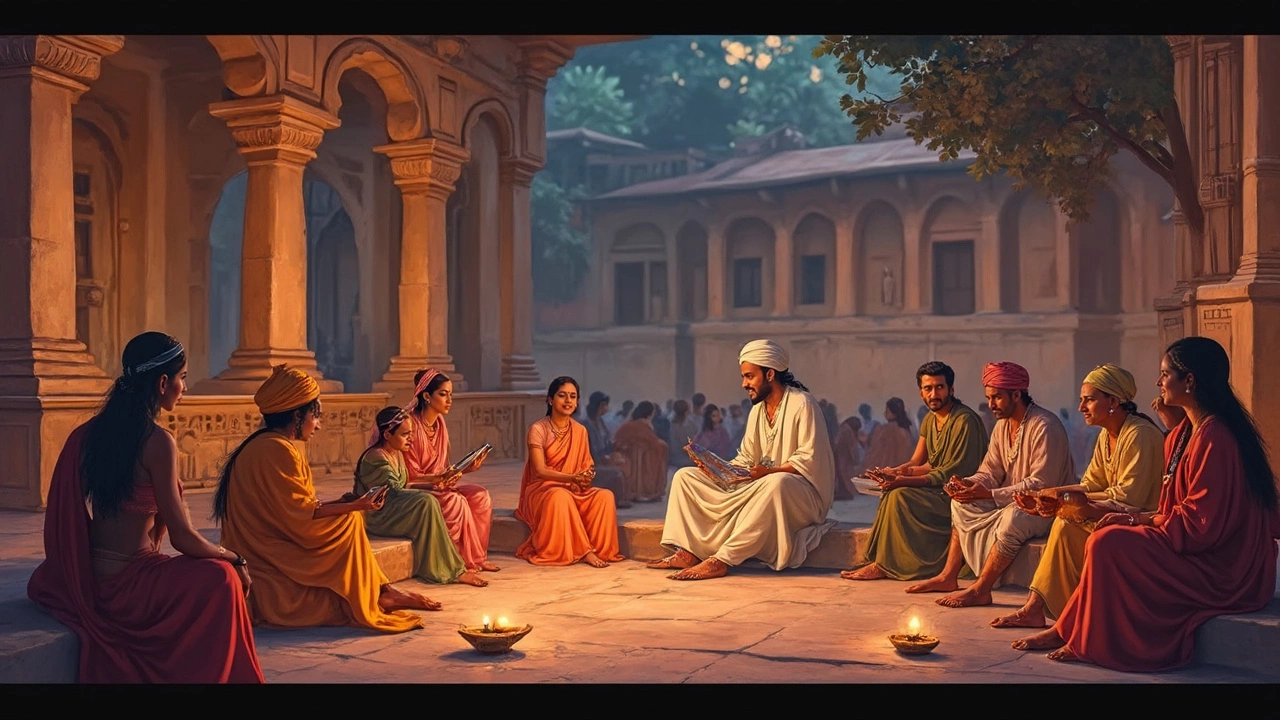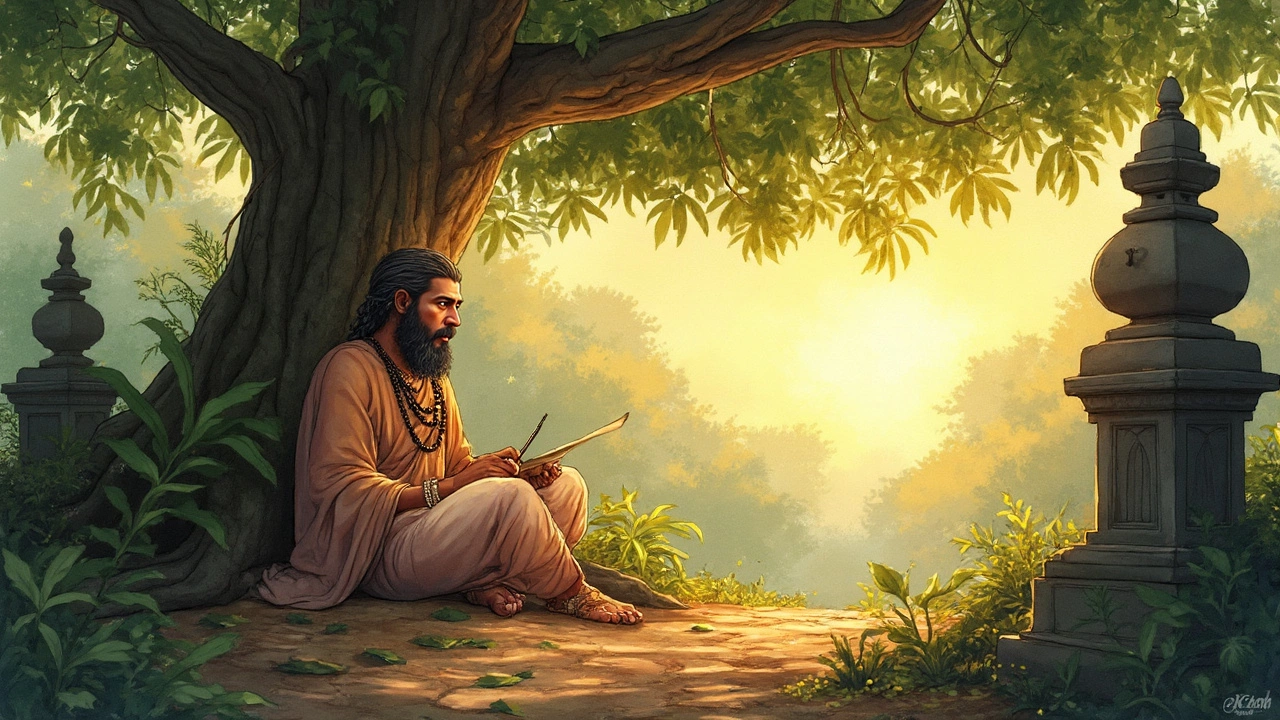When someone asks, “Who is the oldest poet in India?” you’d think there’s a straightforward answer. Spoiler: it gets complicated. We’re talking poetry that goes way back—so far that most of us can’t even imagine life in that age. The search for India’s oldest poet takes you to a time before paper, before ink quills, before any of the usual trappings of literature we know today. This is the heartland of oral storytelling, where memory was sharper than any modern hard drive, and words were passed down the generations with nothing but devotion and discipline.
Tracing the Origins of Indian Poetry
Let’s dig into the roots first. The thing about Indian poetry is, it’s ancient. We’re not talking centuries; we’re talking millennia. The earliest forms are found in the Vedas—big, mystical texts that are more than just books; they were spiritual manuals, historical chronicles, and, guess what, poetic masterpieces all rolled into one. The oldest poet in India often gets linked to the Rig Veda, said to be compiled around 1500–1200 BCE. Scholars debate these dates endlessly, but if we stick with this timeline, Indian poetry is easily over 3,000 years old.
The Rig Veda isn't a single-author work—we need to be clear here—but it is packed with poetic hymns. These hymns were often attributed to individual sages called rishis. For years, poets weren’t celebrities; they were revered spiritual leaders, their verses woven around rituals, nature, and that big question: what’s the meaning of life? These poetic traditions were never static. They changed as society changed, transforming with every major shift, from new forms of governance to advances in language itself. Sanskrit, for instance, kept evolving over time and so did the style and subject of poetry. You can still spot echoes of these earliest verses in Indian culture today, whether you’re at a temple, a wedding, or just flipping through a book of proverbs.
Who Was India’s Oldest Poet?
If you’re expecting a neat answer like, “It was this guy, and here’s his selfie,” you’ll be disappointed. The oldest name we’ve got is Valmiki—yes, the sage who is credited with writing the Ramayana. But even this isn’t a rock-solid fact. Some traditions argue that Valmiki’s Ramayana was crafted later, maybe around the 5th to 4th century BCE. While Valmiki is widely dubbed the ‘Adi Kavi’ (the first poet), he wasn’t the very first person to create verse in India.
Go back further, and you’ll stumble across names like Vishvamitra, Vamadeva, and Lopamudra, who were responsible for some of the hymns in the Rig Veda. These sages—men and women, by the way—weren’t writing poems for fun. Their verses formed the backbone of rituals and philosophy. Imagine the responsibility: crafting words that carried spiritual power, words people repeated in prayer or during life’s milestones for generations.
And let’s not forget that much of this poetry is anonymous. Oral tradition dominated. Literally hundreds of hymns and verses have been passed down from mouth to mouth, surviving the fall of dynasties, the rise of new empires, and even the march of time itself. When my wife Nisha and I visit ancient temples or listen to old family elders chant verses, I’m reminded that we’re still savoring the words of poets who lived thousands of years ago—none of them got Instagram fame, but their influence is everywhere.

Legendary Ancient Indian Poets and Their Works
Since Indian poetry isn’t the work of a lone ranger, let’s meet some standout names from ancient times. Start with Valmiki, said to have written the Ramayana in beautiful Sanskrit poetry. Scholars say it’s not just a literary epic; it’s a philosophical and ethical guide, filled with drama, adventure, and reflections on human nature. If you’ve never read any part of it, pick up a translation—it’s not some dusty relic, it’s quite lively!
Next comes Vyasa, credited with the Mahabharata, another epic so massive it makes Game of Thrones look tiny. The Mahabharata packs poetry, philosophy, war, politics, and family drama into 100,000 couplets. Vyasa himself is a bit of a mythical figure—his real existence is debated, but his work’s influence isn’t. Then you have rishis like Vashistha, Atri, and Gargi, who contributed to Vedic hymns—some even argue that Gargi, a female philosopher-poet, deserves a spotlight for debating spirituality and metaphysics in public assemblies back in the day.
India’s oldest poetry is not just about who wrote what, though. It’s about how verse became a daily habit. Chants, prayers, lullabies—you name it, someone in India’s early history was composing it in song. And while Sanskrit is the superstar here, don’t sleep on Tamil. The Sangam poets of ancient Tamil Nadu, like Avvaiyar and Kapilar, wrote heart-grabbing love poems and political verses between 300 BCE and 300 CE. Many scholars tip their hats to Sangam literature as one of the world’s oldest and richest traditions of secular poetry.
| Poet/Name | Era (approx.) | Main Work/Contribution |
|---|---|---|
| Valmiki | 5th-4th century BCE | Ramayana |
| Vyasa | 3rd-2nd century BCE (traditional) | Mahabharata |
| Vishvamitra | Pre-1000 BCE | Rig Veda Hymns |
| Lopamudra | Pre-1000 BCE | Vedic Hymns (Rig Veda) |
| Avvaiyar | 1st-2nd century CE | Sangam Tamil Poetry |
| Kapilar | 1st-2nd century CE | Sangam Tamil Poetry |
How Oral Tradition Shaped Early Indian Literature
We usually think of poets scribbling verses in quiet rooms, but ancient Indian poets worked differently. Writing wasn’t even around when the oldest poems took shape. It was all oral—poetry meant to be recited, sung, remembered, and retold. The training for these poets was fierce. Youngsters spent years memorizing hundreds of verses. You couldn’t Google a lost line; you just practiced until every word stuck.
This oral tradition explains how some poets’ names faded, even as their verses lasted. When families sat together at dusk to chant hymns, or when community storytellers stood in village squares narrating the Ramayana, nobody asked, “Who wrote this?” The verses belonged to everyone. That’s why the culture of poetry in ancient India feels communal—rooted in the collective, not the individual. You’ll still find this vibe today, at kavi sammelans (poetry gatherings), where anyone can share, perform, or just enjoy poetry as a shared experience.
And it wasn’t just about remembering the words. Poets paid attention to rhythm, meter, and sound; their verses were music before they were anything else. This style is called chandas, and it takes serious skill to pull off. It’s probably why these verses survived for centuries despite shifting languages and dialects. Traditional Indian families often remember these poetic lines long after the details of the original stories fade or change. Even as scripts like Brahmi or Tamil Brahmi began to be used, the knack for oral transmission kept poetry alive and adaptable.

Why Early Indian Poetry Still Matters Today
You might wonder, “Why should any of this matter in 2025?” Well, it’s not just about the stories—it’s about a mindset. Early Indian poetry shows the power of words to carry wisdom, love, anger, or loss through the ages. Think about weddings. The verses chanted at most Hindu ceremonies today have their roots in those old Vedic hymns. Those rituals your grandparents followed? Probably inspired by lines composed by an ancient rishi whose name is now lost to time.
Early poets shaped how Indians think about gods, morality, love, and duty. Their verses are woven into everything from Bollywood songs to internet memes—just more modern guises. For modern writers or creators like me, dipping into these ancient lines is a goldmine. Every time I read one aloud to Nisha, I find new meaning hidden underneath the surface. That’s real longevity; not many things last that long.
If you want to connect with these ancient voices, you don’t have to become a scholar. Start with English translations of the Vedas, the Ramayana, or Sangam poetry. There are great adaptations out there that keep the spirit alive without turning the text into a museum piece. Look for poetry readings in your city, or join online groups that focus on Indian literature. Just listening to these old words, you’ll see why they mattered—and why they still show up in conversations about who Indians are, and where they come from.
